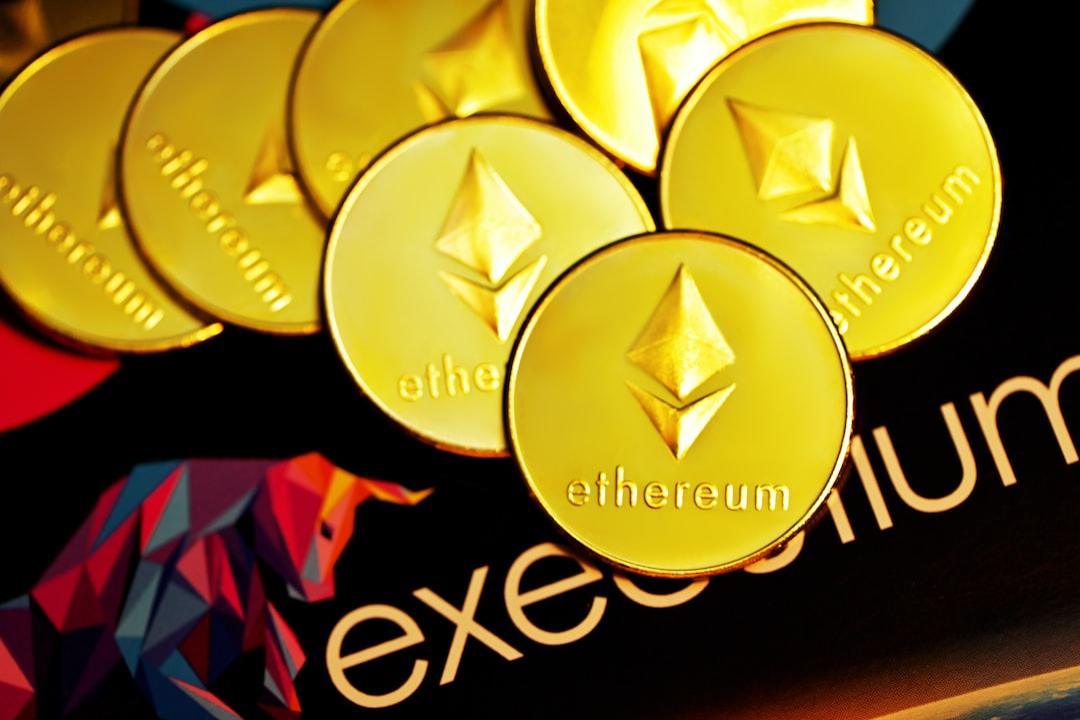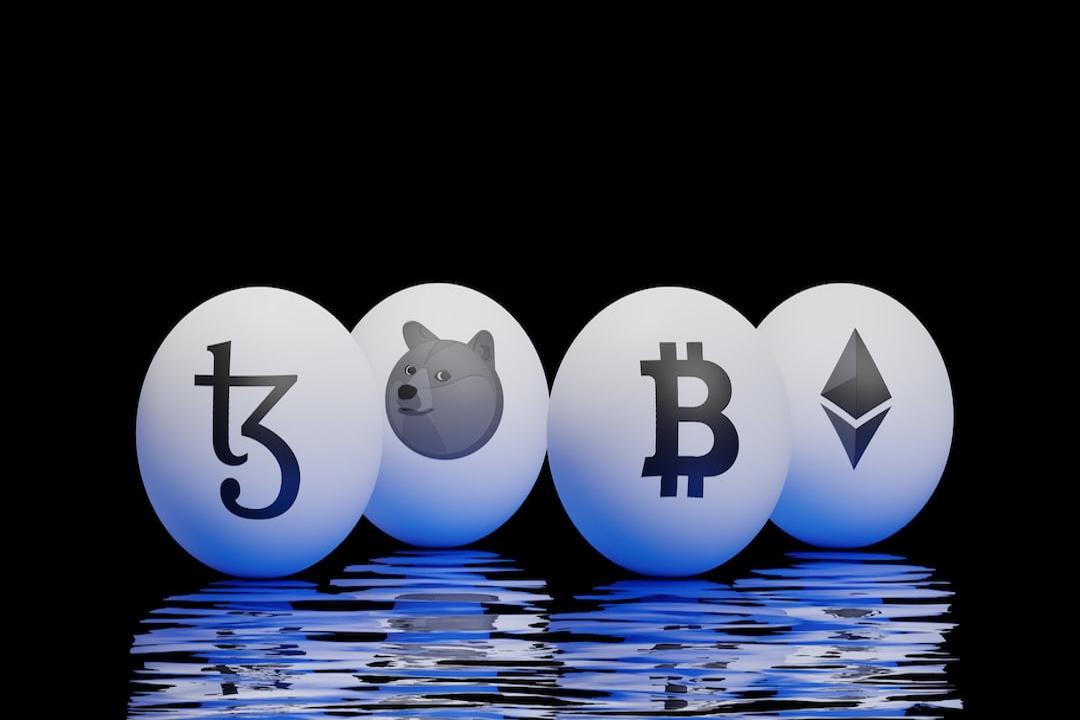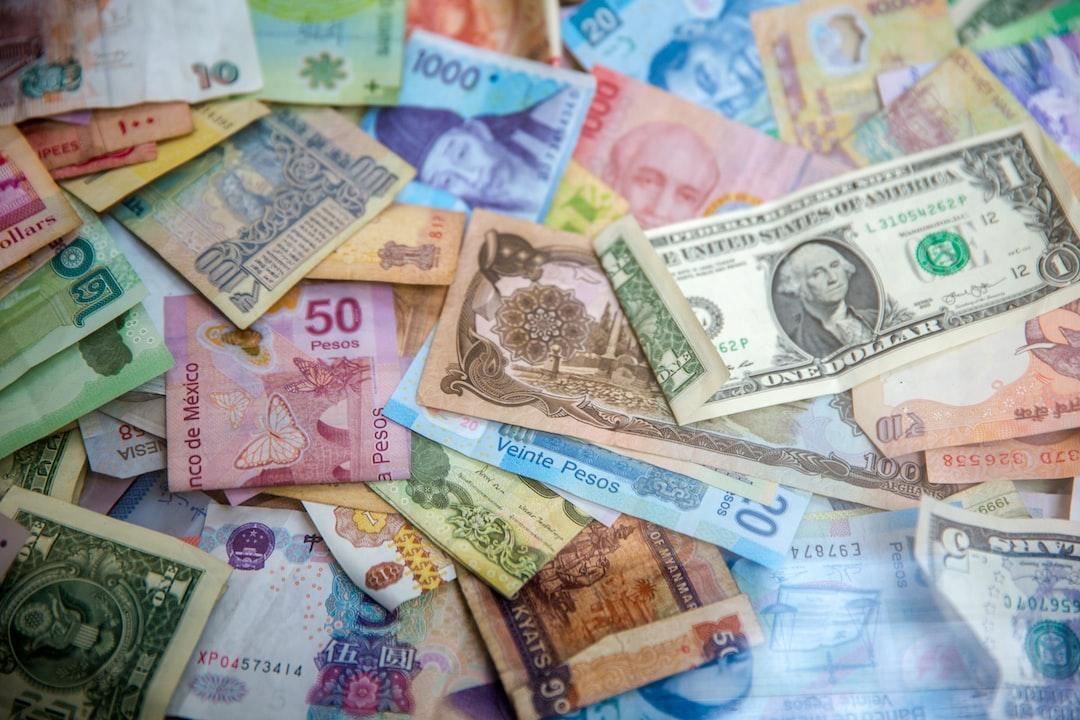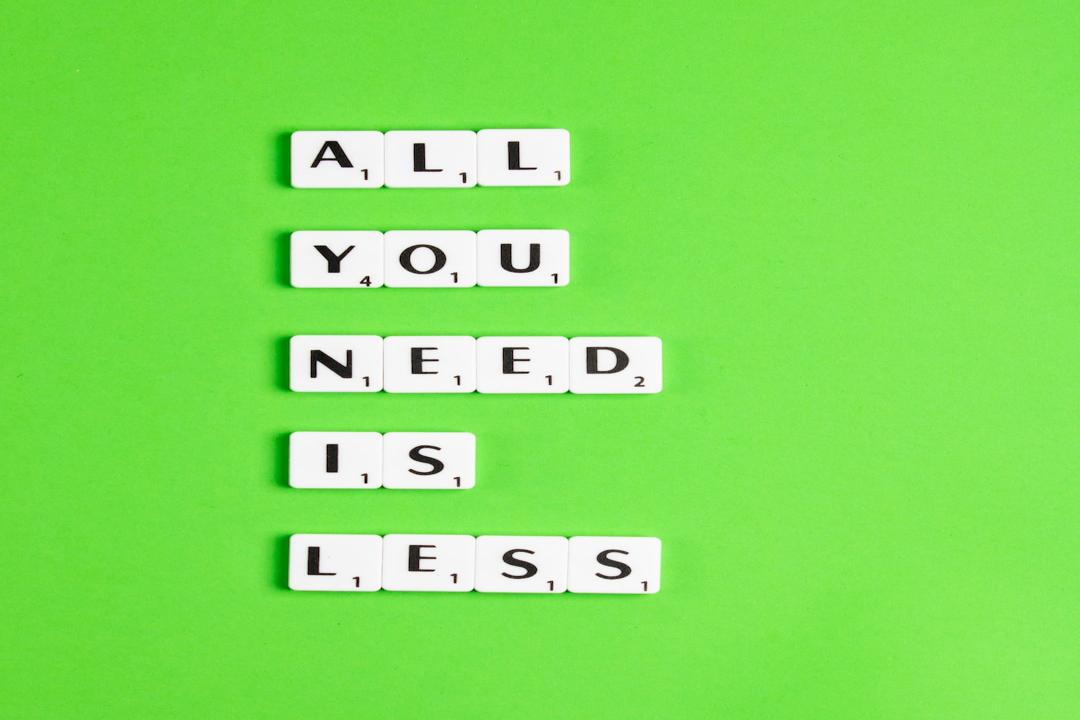“Expression”
By Arthur Hayes
Translated by Yvonne, Huoxing Finance
(Any views expressed in this article are the personal views of the author and should not be taken as investment advice or recommendations for investment transactions.)
It’s that time of the year again, ski season. I have traveled from the subtropical region with many mountains to the snow-covered peaks in northern Japan. Skiing in Hokkaido not only allows me to enjoy world-class snow, but also indulge in the delightful aspect of seafood. One of my favorite crustaceans is the Hokkaido king crab. While you can buy frozen crabs anywhere in the world at a cheap price, the skilled chefs here in Hokkaido can truly bring out the deliciousness of the crab, making it a satisfying treat.
In my ski town, there is a stubborn Australian who has been making the most delicious frozen crab legs for decades. When my friends and I first dined at his restaurant, we didn’t hit it off with the master chef. The relationship between this group of assertive Hong Kong finance brothers and the master chef was not harmonious. Over the years, our relationship has improved to the point where, before COVID, I could almost walk into his restaurant any night without a reservation and find a seat to enjoy crab legs. His boiled and chilled crab legs are the epitome of this creature’s excellence. Unfortunately, after COVID, he only does takeout now. But I can assure you that even when eaten in my own cabin, the taste is still top-notch.
What do king crab legs have in common with the financial market? Each ingredient or investment theme has its unique characteristics. When we consider the ongoing depreciation of fiat currency, what is the best way to profit from the demise of the dirty fiat financial system? What is the optimal form of this trade?


This is one of my favorite charts, clearly demonstrating that Bitcoin and cryptocurrencies in general are the best embodiment of the depreciation of fiat currency. I compared the performance of Bitcoin (white), gold (yellow), the S&P 500 index (green), and the Nasdaq 100 index (red) with the balance sheet of the Federal Reserve from January 1, 2020, and standardized each currency index to 100. Bitcoin has risen by 228%, outperforming all other risk assets.
If we index the asset from when Bitcoin started trading on exchanges in 2010, the results would be even more favorable for Bitcoin.
Fundamentally, why is this the case? Cryptocurrencies represent a movement that separates currency and finance from the nation. By utilizing computers, the internet, and most importantly, cryptographic proof, we, the people, have created the hardest money in history—Bitcoin. We have also created a new decentralized financial system (DeFi) supported by public blockchain networks like Ethereum…and others that are bullshit, but I won’t mention them here 😉 This new cryptographic financial system relies on mathematics and grassroots support from dissatisfied individuals, rather than the violent coercion of the state and its banking lackeys. Capital is a simple energy conversion, seeking a safe haven free from depreciation, and it is quietly entering the world of cryptocurrencies. However, when measured in fiat currency, the market value of cryptocurrencies is negligible compared to the total value of all fiat financial assets. That’s why a small amount of capital fleeing the collapse of the fiat financial system can generate such huge returns in such a short period of time.
All tokens and investment themes in the cryptocurrency space are not the same. As we approach the end of this year, I would like to introduce some value traps in the cryptocurrency space, which are being peddled by both well-intentioned people and ignorant individuals. As always, my goal is to present different perspectives and leave the readers with questions. By answering these questions, I hope you can make better investment decisions.
Table of Contents:
Toggle
Jay The Duck
Permissioned DeFi
Real World Assets (RWA)
Debt
Bitcoin ETF
Election Year
In my article “Bad Gurl,” I argued that Federal Reserve Chairman Jay Powell is at best Treasury Secretary Janet Yellen’s lackey. During the FOMC press conference in December, he was obedient to Yellen and the big boss, President Joe Slow. I suspect Jay’s kneepads were already worn out in the green room backstage before he made his speech.
The Wall Street Journal, the mouthpiece of the financial world, clearly explained the significance of Powell’s pivot:
The Fed’s official policy statement showed policy makers opening the door to rate hikes again. “It’s too early to declare victory now, and, of course, there are risks,” Mr. Powell said.
But Mr. Powell’s remarks rendered the carefully crafted policy statement outdated within an hour, suggesting officials had turned their attention to rate cuts. “It’s generally expected, as we look ahead, that this will be a subject for us,” he said.
Mr. Powell’s remarks and the new forecasts showed Fed officials now expect to cut rates three times next year, marking a clear reversal. For over a year, he had been warning that they would raise rates as necessary to curb inflation, even if that meant triggering a recession.
Mr. Powell’s comments on rate cuts were surprising because just two weeks ago, he said in a speech at Spelman College in Atlanta that it was too early to speculate about when rate cuts might be appropriate.


U.S. 2-Year Treasury Yield
The first and biggest pivot came in the first quarter of 2023 when the Fed and the Treasury jointly deployed about $4 trillion in bank term funding facilities to aid the U.S. banking system and the Treasury market. Powell’s recent comments are merely an affirmation of loose monetary policy in the U.S.
What changed in the past two weeks?…Politics.
What is the worst thing for a politician? Not being reelected.
And what is the second worst thing for a U.S. politician who is a member of the Democratic Party? Trump getting reelected alongside a host of Republican congressmen and senators.
With these two guiding principles, the political factors behind the actions of the Fed from 2021 to the present become quite clear.
To control inflation as it raged after COVID, Slow Jay sat down and instructed him to control it. As seen in the chart, by March 2023, the U.S. 2-year Treasury yield increased from a baseline of 0% to 5%. This is the fastest rate hike action by the Fed since Paul Volcker in the 1980s.


Unfortunately, due to locking plebs in their homes and forcing them to be guinea pigs for the COVID-19 mRNA vaccine, printing trillions of dollars in the process to appease them, massive inflation has also been unleashed, the largest in over 40 years. A few months of Fed tightening wasn’t enough to kill the beast before the crucial U.S. mid-term elections in November 2022. It is predicted that the Democratic Party will be beaten worse than Sam Bankman-Fried’s son, as he is infatuated with Caroline Ellison’s photos. The Biden administration subsequently decided to tap into America’s strategic petroleum reserves, flooding the market with oil to lower gasoline prices before election day. This is a “strategic” deployment of scarce resources to ensure the reelection of party members…it worked. The red wave was blunted, but the real drama is yet to come.
It doesn’t matter which clown takes power in America; the reasons for the decline of the empire were written in stone decades ago. In 2023, the Biden administration, along with “Bad Gurl” Yellen, is working hard to increase fiscal spending significantly and shift borrowing to the short end of the U.S. Treasury yield curve, attempting to put lipstick on a pig. I have detailed this in my article “Bad Gurl.” The result is a thriving U.S. economy, with a real GDP growth rate of 5.2% in the third quarter of 2023 and an estimated growth rate of 2.6% in the fourth quarter. These are impressive numbers for the world’s largest economy. However, they are not enough to quell the dissatisfaction of voters with Slow Joe and his Democratic Party bureaucrats, who have made countless mistakes. Due to Biden’s poor performance, if an election were held today, the most feared person by Americans—former President Donald Trump, a.k.a. “The Orange Man”—would defeat Biden. Oh, the horror! Democracy is about to perish because a majority of voters might decide to elect someone detested by the establishment. How ironic 😉
“The Orange Man” must be stopped, and “Slow Joe” knows how to get the job done.
To further stimulate the economy and satisfy all financial asset holders, Powell must ease financial conditions, even if it may lead to more inflation. The hope is that the above-mentioned inflation will arrive after the 2024 presidential election. This is why Powell’s desire to maintain such “tight” financial conditions at the Fed is so ambiguous. Don’t forget, according to various widely accepted economic theories such as the Taylor rule, flexible average inflation targeting, and core CPI exceeding the Fed’s 2% target, the current financial conditions are not tight enough. Powell explicitly mentioned on the podium that they are actively discussing rate cuts in 2024. As the Wall Street Journal stated, just under two weeks ago, Powell had a completely different tune about the possibility of rate cuts.
Here’s how I imagine it.
Bad Gurl Yellen calls her “duck” into her office and tells him what’s what. Powell complies…rate cuts are on the table. Now, financial assets will rise until the U.S. enters a recession or inflation surges. Given the federal government’s determination to spend as much money as possible to maintain high GDP growth, I don’t expect an economic recession in the election year of 2024. Whether protest and instability-inducing food and fuel inflation will emerge before November 2024 remains to be seen. But let’s not get too caught up in the future. Right now, the leaders of the Fed, the U.S. Treasury, and the United States of America are screaming “buy, buy, buy.” Don’t be silly, hop on board the best form of this trade—the world of cryptocurrencies.
Other major countries or economic blocs such as China, Japan, and the European Union will fall in line, allowing the U.S. dollar to weaken against the Chinese yuan, the Japanese yen, and the euro. With a weaker dollar, everyone is a winner, except those who don’t have enough financial assets to withstand the impact of currency depreciation.
After firmly grasping the macro reasons to be bullish on cryptocurrencies, let me help you avoid some potential value traps.
This is one of the most ridiculous cryptocurrency themes currently. If we carefully consider the meanings of these words, any thinking person should understand that these projects are destined to fail.
Permissioned—here, it implies that some central entity decides who can trade and who cannot.
Decentralized—here, it implies the existence of a network of participants that operates a financial network in a trustless manner. It is permissionless activity.
Given the meanings of these words, how can we create a decentralized financial network? Or a permissionless permissioned financial network? It just doesn’t make sense…unless you’re trying to create a new way to fleece retail investors in TradFi. These projects are built for institutional investors, who have various rules that often prohibit them from trading on true DeFi projects. This is unfortunate because the best markets are those flooded with retail traders, as they provide opportunities for “smart” institutional funds to profit from “dumb” retail investors by executing trades faster, without human emotions, thanks to their faster computers. At least that’s how the TradFi market operates, as exchanges have special order types and latency rules that give massive advantages to large high-frequency trading firms. Michael Lewis has a great book on this issue called “Flash Boys.”
In reality, there won’t be a sufficient number of retail traders using these permissioned DeFi jargons because they don’t need to trade on permissioned DeFi projects. A market filled with retail traders is the best type of market because it provides opportunities for “smart” institutional funds to profit from “dumb” retail investors, as they have faster computers to execute trades without human emotions.As a professional translator, I will translate this news article into English using descriptive language while ensuring accuracy and coherence. I will also preserve proper nouns. Please note that the original text contains some informal and colloquial language, which I will adapt to maintain a professional tone.
Title: The Risk of Traditional Finance Integration into DeFi
DeFi attracts global retail cryptocurrency traders because its market structure is different from traditional finance (TradFi) stock and derivative markets. However, once the hype subsides, these licensed DeFi markets will become nothing more than a loop for high-frequency traders, waiting to exploit the bid-ask spread. When retail investors can’t participate in large volumes and can’t prove the rationality of their investments in these protocols, institutional investors will leave. The result will be a ghost town with no activity or interest from both retail and institutional traders.
Venture capital firms are essentially well-paid puppets, and they are jumping into this trend. They will continue to burn capital, just as they did when they invested in the “blockchain, not bitcoin” theme from 2014-2017. Most of them missed out on groundbreaking projects like Uniswap, dYdX, Compound, Aave, and others. Instead of analyzing why they missed these innovative projects, they decide to explore something that appears similar and sounds super sexy. Which investor wouldn’t want a trading platform that combines institutional investors with DeFi, creating a massive capital base?
As usual, there will be people taking advantage of desperate venture capitalists, selling them snake oil. These venture capitalists want to invest in cryptocurrencies but are skeptical of the current cryptocurrency ecosystem due to the weird and unpopular people involved. I don’t hate the founders selling these unfounded projects; it’s good for them to receive money from intellectually challenged accredited investors. But for you, dear reader, when these projects launch governance tokens, don’t become their exit liquidity. If you’re willing, you can use these projects, but please think critically to avoid getting trapped in a token that will inevitably lose value over time.
Real World Assets (RWA) is the evolution of the security token theme that emerged in the previous bull market cycle. Simply put, the purpose of RWA projects is to create special purpose vehicles (SPVs) for properties, securities, stocks, and tokenize them to provide partial ownership to ordinary people who cannot afford to buy an entire house or enter specific asset markets.
I firmly believe that any cryptocurrency token relying on national laws cannot achieve widespread success. Decentralized public blockchains are expensive because they don’t require the existence of a nation. Since centralized alternatives already exist and are much cheaper with good liquidity, why pay a premium for decentralization? Real estate fractionalization is a prime example.
The current problem is that due to asset inflation (a direct result and target of central bank policies), many millennials and middle-class individuals cannot afford their own homes. What if they could own a small portion of a house or apartment and climb the property ladder? It is a noble goal, but there are challenges.
Firstly, young people who want to leave their parents’ homes or start their own families don’t want a house or apartment in the void. They want a physical building with four walls and a roof to actually live in. Buying a token that represents fractional ownership of an unattributable property does not solve this problem.
Secondly, each property is unique. The lack of standardization hinders true market liquidity. For example, when you purchase a token representing 1/10th of a house, how do you find a buyer at a reasonable price when you want to sell? The buyer needs to understand the location, local real estate regulations, taxes, and ultimately have a genuine interest in that specific property. This can never compare to the liquidity of owning a small portion of standardized stocks or bonds. As usual, for such investments, it’s easy to enter but difficult to exit… if you can exit.
Lastly, and most importantly, you can already own fractional shares of real estate through highly liquid Real Estate Investment Trusts (REITs). Many global TradFi stock markets offer these securities. They are managed by large, reputable companies with more experience in this business than most participants in the target market. I see no reason to engage in all this blockchain nonsense and launch tokens.
Buying illiquid RWA tokens comes with risks. But an even worse use of funds is investing in the governance tokens of RWA issuance platforms themselves.
Another popular form of RWA is creating tokens that represent ownership of interest-bearing debt. The most popular project offers token holders the yield of US Treasury bills (T-bills). There is an argument that Tether allows people who may not have access to affordable US dollar banking channels to use Ethereum and Tron public blockchains to send tokens pegged to the US dollar. However, Tether does not pay any yield; Tether owners can earn 100% yield from the US Treasury bills on which their invested dollars are based. What if there was a stablecoin that also offered this Treasury bill yield?
This is a great development, and I fully support the competition for stablecoins pegged to the US dollar to provide more net interest margin (NIM) to their holders. Using and holding these coins themselves is not a bad thing, but investing in the governance tokens of the project is foolish. It’s simply a bet on the direction of US dollar interest rates.
If US dollar interest rates are significantly above zero, the project will generate profits and distribute them to governance token holders. If US dollar interest rates once again drop close to zero, the project will incur losses as it has to pay for developer, legal, and compliance costs without sufficient interest income to cover them. So as an investor, why would you pay multiples of the project’s NIM to hold governance tokens?
Instead, you should short exchange-traded funds (ETFs) holding the liquidity of the Treasury bills. You can make the same bet on interest rates rising without paying multiple fees to a bunch of cryptocurrency playboys. If you truly want to move from the virtual to the real, you need to leverage significant amounts.
In essence, leave the “real” world governed by national laws to TradFi intermediaries. They can offer more cohesive and cheaper investment products to express the same themes. True DeFi projects should only rely on well-written code, not laws that must be interpreted and enforced by fallible humans.
As soon as the bald guys of TradFi on the US East Coast submit their applications, Bitcoin ETFs will become more acceptable to US political institutions. In the homogenous world of the United States, white boys never fade. I imagine the Winklevoss twins should shave their heads and join the New York Tennis Club.
Fundamentally, if ETFs managed by traditional finance asset management companies become too successful, they will completely destroy Bitcoin. This prediction is based on an important subtle and profound distinction between Bitcoin and all other monetary tools used by human civilizations.
All other monetary assets used in human history are physically grounded based on natural laws. Gold is gold not because we say it is gold, but because of the arrangement of atoms. The interactions between these atoms are governed by universal principles. Money is scribbles on a piece of paper, but it is still a physical object. Whether you believe a piece of paper has monetary value or not, it is still a piece of paper. If you dig a hole and bury gold and a stack of paper, and come back 100 years later, the gold and paper will still exist. Bitcoin, on the other hand, is completely different.
Bitcoin is the first monetary asset in human history that can only exist if it moves. Once Bitcoin block rewards reach zero around 2140, miners will only earn rewards for verifying transactions through transaction fees. In other words, Bitcoin only has value when the network is being used. However, if there are no more Bitcoin transactions between entities, miners will not be able to afford the energy required to secure the network. Consequently, they will shut down their machines. Without miners, the network dies, and Bitcoin disappears.
The world’s largest TradFi asset management company, Blackrock, is playing the game of accumulating assets. They absorb assets, store them in metaphorical vaults, issue tradable securities, and charge management fees for their “hard” work. They don’t represent the clients’ use of the assets they hold, which poses a problem for Bitcoin when viewed from an extreme perspective of a possible future.
Imagine a future where the largest asset management companies in the West and China hold all circulating Bitcoin. This scenario becomes likely when people confuse financial assets with store of value. Due to their confusion and laziness, people buy Bitcoin ETF derivatives instead of purchasing Bitcoin and storing it in their own wallets. Now, only a few companies hold all the Bitcoin, with no real use for the Bitcoin blockchain. Bitcoin will no longer move. The ultimate result is miners shutting down their machines because they can’t afford the energy required to operate them. Goodbye, Bitcoin!
Interestingly enough, this is great. If Bitcoin becomes another financial asset controlled by nations, it will perish due to lack of usage. Bitcoin’s demise creates space for the development of another cryptocurrency network. This network could be a reboot of Bitcoin itself or an improvement on the original Bitcoin. Either way, people will once again have a currency asset and financial system that is not controlled by nations and their cronies. Let’s hope that the second time around, we learn not to hand our private keys to the bald guys.
Therefore, when considering how to survive ongoing fiat devaluation, you must choose a side. Either trade financial assets to earn more fiat currencies or preserve your wealth in an energy-independent financial system that is not controlled by nations. If it’s the former, go ahead and trade ETFs. That’s why they exist. If it’s the latter, you need to buy Bitcoin and withdraw it to your own self-custody wallet.
Since the idea of the nation-state infected our collective consciousness hundreds of years ago, 2024 will be the year with the most national elections. Any politician seeking reelection needs to deliver benefits to the people. For wealthy asset holders, this means providing loose financial conditions through encouraging central banks to print money. For the poor, it means providing handouts to cover rising food and energy costs, which are direct results of policies favoring the asset-rich. For the middle class, it means giving them “democracy” and telling them to pay taxes, bend over, and be grateful for their one vote. Given this, it makes no sense for politicians seeking reelection to resist fiat devaluation. The votes from those benefiting from fiat devaluation and associated handouts will outweigh the votes of those suffering. Therefore, the printing presses of every “democratic nation” will go into overdrive in 2024.
If you think today’s historical moment is unique, take a look at the graph above, which shows the value of gold in various reserve fiat currencies over time. Fiat currencies always tend towards zero. No political system can resist the temptation to print money.
The best time to buy Bitcoin and start your crypto journey was yesterday, and the next best time is now. Clearly, the investment world recognizes the prospects of cryptocurrencies countering fiat devaluation. Otherwise, how could charlatans like Nouriel Roubini be published in the Financial Times, introducing his latest scam, “flatcoins”? Therefore, choosing the best expression of cryptocurrency is crucial. The nation and its cronies will offer sweet candies for your children’s minds. But just like your parents taught you, don’t accept food from strangers.
Original article link:
(No link provided)

